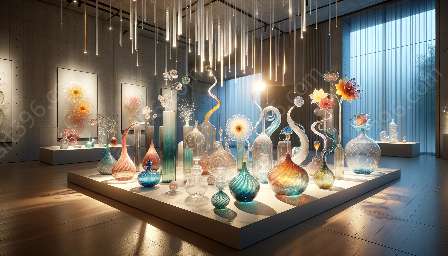3D printing technology has revolutionized the world of art, enabling creativity and innovation in various mediums. When it comes to the intricate and delicate world of glass art, the use of 3D printing has both direct and indirect psychological impacts on artists, enthusiasts, and the art world at large.
Understanding the Intersection of 3D Printing and Glass Art
Glass art represents a traditional and ancient craft that has been practiced for centuries, requiring high levels of skill, craftsmanship, and patience. However, with the introduction of 3D printing technology, the boundaries of glass art are being pushed to new frontiers. Artists can now experiment with complex designs, intricate patterns, and innovative forms that were previously unattainable with traditional glassblowing techniques.
For artists, the integration of 3D printing technology in glass art represents both a challenge and an opportunity. The shift from traditional artisan methods to digital design and fabrication processes can lead to a range of psychological responses, including excitement, curiosity, and even apprehension.
The Transformative Effects of 3D Printing in Glass Art
One of the key psychological impacts of 3D printing in glass art is the sense of empowerment it offers to artists. The ability to bring complex designs to life in a precise and efficient manner can boost an artist's confidence and creative exploration. Artists can explore new dimensions, textures, and structures, pushing the boundaries of what is conventionally possible in glass art.
Moreover, 3D printing in glass art can result in a shift in the traditional hierarchy of knowledge and skill. While mastery of traditional glassblowing techniques has long been revered, the proficiency in digital design and 3D printing now holds a significant place in the artistic landscape. This shift can lead to a reevaluation of what it means to be a skilled artist in the contemporary world.
The Implications of 3D Printing on Glass Art Enthusiasts
For enthusiasts and collectors of glass art, the advent of 3D printing introduces a new dimension of appreciation and understanding. The accessibility of unique and intricate glass pieces created through 3D printing opens up a world of possibilities for art enthusiasts. The psychological impact on collectors includes a sense of awe and wonder as they witness the fusion of traditional craftsmanship and cutting-edge technology in the art they admire.
Compatibility with Digital Technologies
3D printing in glass art also aligns with the broader trend of digital innovation in the art world. As digital art forms continue to gain prominence, the integration of 3D printing technology in glass art bridges the gap between traditional and contemporary artistic practices. This compatibility showcases the potential for collaboration and cross-pollination of ideas between artists working in different mediums.
Conclusion
The psychological impact of 3D printing in glass art is multifaceted, encompassing the perspectives of artists, enthusiasts, and the broader art community. This technological advancement transforms the landscape of glass art, offering new creative possibilities and challenging traditional notions of skill and craftsmanship. As the intersection of 3D printing and glass art continues to evolve, the psychological impact will undoubtedly shape the future of this exquisite art form.

